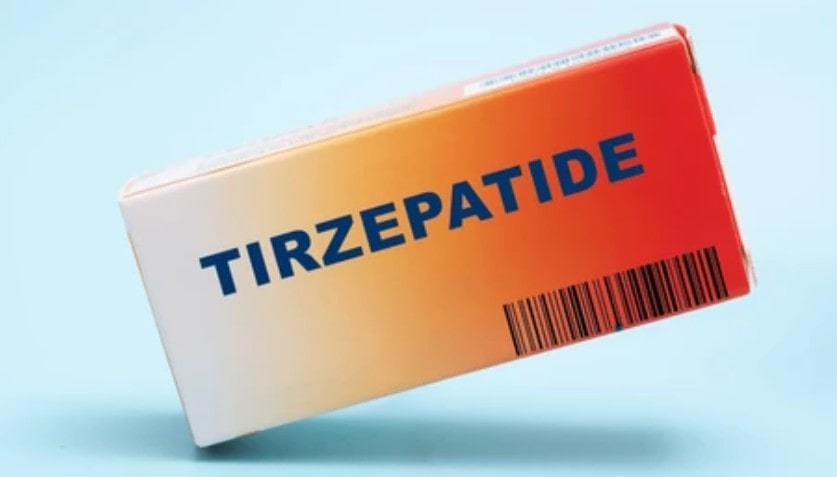Tirzepatide (Mounjaro) is transforming diabetes and obesity care by targeting GLP-1 and GIP receptors. It offers effective blood sugar control and significant weight loss, especially for those with insulin resistance or metabolic challenges.
What is Tirzepatide?
Tirzepatide is the active ingredient in the medication Mounjaro, which is prescribed for type 2 diabetes and weight management. In the UK, Mounjaro is the brand name under which tirzepatide is marketed and made available. It helps control blood sugar and supports weight loss through once-weekly injections.
Key Benefits of Tirzepatide
- Enhanced Blood Sugar Control: Helps lower HbA1c levels in patients with type 2 diabetes.
- Significant Weight Loss: Supports sustainable weight loss through appetite suppression and delayed gastric emptying.
- Improved Insulin Sensitivity: Beneficial for managing insulin resistance and metabolic health.
- Convenient Dosing: Administered once weekly via subcutaneous injection.
These benefits position Tirzepatide as a versatile agent not just for diabetes but also for long-term obesity management.
What are the Side Effects of Tirzepatide?
Tirzepatide may cause nausea, diarrhoea, reduced appetite, tiredness, or mild injection site reactions. Serious side effects like pancreatitis are rare. Most side effects are temporary.
Common Side Effects
Some of the most commonly reported side effects with Tirzepatide are related to the digestive system. These may include:
- Nausea
- Vomiting
- Diarrhea
- Constipation
- Reduced appetite
These symptoms typically appear early in the treatment, especially when starting or increasing the dose. For most people, these discomforts gradually improve as the body adjusts to the medication. Starting at a lower dose and slowly increasing can help make these side effects more manageable.

Less Common but Serious Side Effects
Although rare, some serious side effects have been noted and should be carefully monitored. These include:
- Pancreatitis: Severe abdominal pain that may radiate to the back. If this occurs, seek immediate medical attention.
- Injection site reactions: Redness, swelling, or irritation at the spot where the injection is given. These are usually mild and temporary.
- Possible thyroid tumors: This risk is still being studied, but it’s something your healthcare provider may discuss, especially if you have a personal or family history of thyroid conditions.
How Tirzepatide is Changing the Weight Loss Journey?
How Tirzepatide Helps?
Tirzepatide helps you feel full faster and stay full longer by slowing how quickly food leaves your stomach. It also boosts how your body manages fat and sugar, making weight loss more sustainable.
What to Expect?
Weight loss often starts within 4 to 8 weeks.
Stronger results usually appear within 3 to 6 months.
Tirzepatide isn’t just about losing weight—it’s about improving energy, appetite control, and overall health, making the journey feel possible.
How to Get Tirzepatide and Its Cost?
NHS Access
Tirzepatide is available on the NHS for people with severe obesity or serious weight-related conditions. You need to meet specific health criteria and get approval from your doctor. For NHS patients, the cost is usually covered apart from standard prescription fees.
Private Purchase
If you’re not eligible through the NHS, you can buy Tirzepatide from private clinics or licensed online pharmacies. Prices typically range from £120 to £200 per month, depending on the dose. A medical consultation is required before purchase.
How to Inject Tirzepatide?
Tirzepatide is administered via a subcutaneous injection using a pre-filled pen. Proper technique and consistency are essential for optimal results.
- Injection Sites: Thigh, abdomen, or upper arm.
- Frequency: Once weekly, same day each week.
- Missed Dose: Can be taken within 4 days; otherwise, skip and resume regular schedule.
How to Increase the Tirzepatide Dosage?
Tirzepatide starts at 2.5 mg once a week for 4 weeks. If well-tolerated, the dose is usually raised by 2.5 mg every 4 weeks (up to 15 mg max). Dose changes should always be guided by your doctor.
Best Practices
Rotate injection sites to avoid skin irritation.
Inspect the solution before use (should be clear, colorless).
Tirzepatide vs. Semaglutide:
Both Tirzepatide and Semaglutide (in Ozempic and Wegovy) are incretin therapies but differ in hormone targets, effectiveness, and patient results.
Comparative Table: Tirzepatide vs. Semaglutide
| Feature | Tirzepatide | Semaglutide |
|---|---|---|
| Mechanism | Dual incretin agonist (GLP-1 + GIP) | Single incretin agonist (GLP-1 only) |
| Weight Loss Potential | Up to 20% body weight reduction | Up to 15% body weight reduction |
| Glycemic Control | Superior HbA1c reduction | Strong but slightly less potent HbA1c reduction |
| Appetite Suppression | More profound satiety effect | Moderate satiety effect |
| Dosage Frequency | Once weekly | Once weekly |
| Side Effects | Primarily GI-related | Primarily GI-related |
Additional Insights
- Tirzepatide offers a faster onset of both blood sugar regulation and appetite control.
- Semaglutide is more widely available but may be less effective for aggressive weight management therapy.
Real Medical Insights and Patient Stories
Both doctors and patients are beginning to see Tirzepatide as a powerful new option for managing diabetes and supporting real, long-term weight loss.
What Doctors Are Saying?
Experts say Tirzepatide’s dual action makes it stand out. It’s also being studied for non-diabetic obesity and PCOS-related weight gain, showing promise for broader use.

What Patients Are Experiencing?
Patients often report better appetite control and more stable energy.
While some experience mild stomach issues at first, these usually fade.
Most people appreciate the easy, once-weekly injection that fits smoothly into daily life.
Frequently Asked Questions (FAQs)
What is Tirzepatide primarily used for?
Tirzepatide is mainly prescribed for type 2 diabetes management and is rapidly becoming a frontline option for weight management therapy due to its dual action on GLP-1 and GIP receptors.
How does Tirzepatide compare to Semaglutide for weight loss?
Tirzepatide generally leads to greater body mass reduction and stronger appetite suppression than Semaglutide. It also shows faster glycemic improvements.
What are the typical side effects of Tirzepatide?
Common side effects include nausea, vomiting, and diarrhea. Most symptoms lessen over time, particularly with dosage titration.
How should Tirzepatide be administered?
Tirzepatide is a weekly subcutaneous injection that can be self-administered. Injection site rotation is important to avoid irritation.
Can Tirzepatide help with non-diabetic obesity?
Emerging studies suggest Tirzepatide may soon become a leading treatment for non-diabetic obesity, offering impressive fat metabolism and appetite control benefits.






